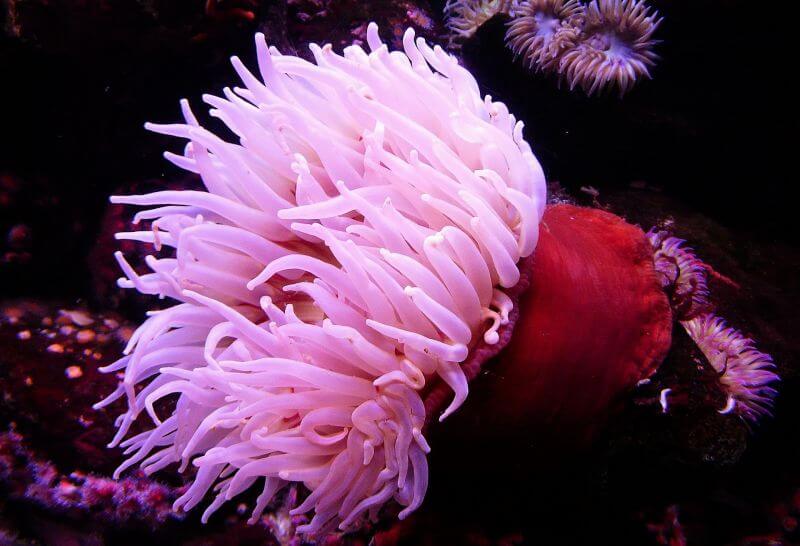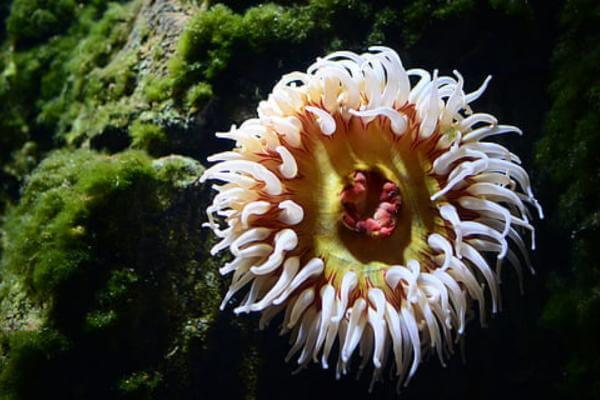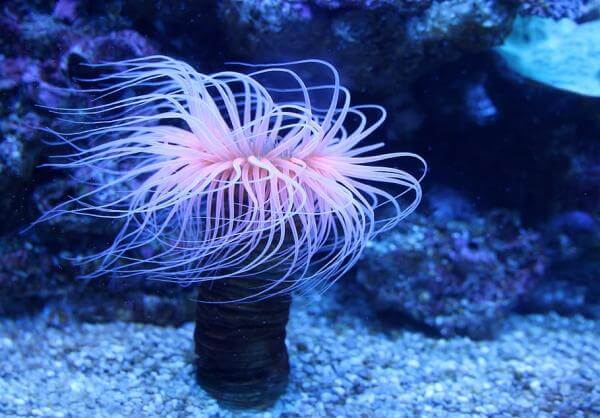How Sea Anemones Release Their Poisonous Stingers

Sea anemones, those animals that look like plants if you see them for the first time, are capable of launching poisonous stingers at dizzying speeds. In fact, they’re so fast that it’s taken until now to be able to study the architecture of these natural weapons in detail.
In this article, we’ll go into detail about how the whole firing process works. Don’t miss it, because you’ll be amazed how such a small and apparently insignificant species could have such a complex mechanism.
What is a sea anemone?
The first thing we need to do is to get to know all about the animals that we’re focussing on today. Anemones are cnidarians that belong to the order of actinians and are relatives of corals and jellyfish. As their name indicates, they live in the sea, and, more specifically, on the bottom of the sea, where they adhere to the substrate or rocks thanks to their pedal disc.
They are solitary polyps that rise above their cylindrical body to extend their tentacles around their oral disc, where the orifice leading to the digestive system is located. It’s in these tentacles that their weapons, the nematocysts, are found.

Nematocysts, highly complex natural weapons
A nematocyst is a subcellular organelle created by cnidocytes, cells specialized in the creation of these stingers. They are present in cnidarians in general, not only in anemones, so you can also read about them if you document, for example, poisonous jellyfish.
Since their purpose is to inoculate venom (or anchor to the sea floor in case of a current), nematocysts have the form of a thin capsule attached to a tubular strand. Some of them have small spicules that function like a harpoon, i.e. they penetrate the prey easily but don’t come out.
Not all nematocysts have spicules, as some are made to pierce the skin of prey and retract quickly.
The mystery of how sea anemones launch their stingers has been unraveled
This process, in which cnidarians fire their nematocysts, is so rapid that only a rough notion of how it works in sea anemones was previously known. In June 2022, the mechanism and architecture were fully described, as stated in the study published in the journal Nature.
The species used for the experiment was the starlet sea anemone, Nematostella vectensis, native to salt ponds and shallow estuaries on the west coast of the United States. Its tentacles are armed with hundreds of venomous stingers (nematocysts) that help this sea anemone hunt its prey, including shrimp and plankton in its environment.
Nematostella vectensis is capable of catching its food in a hundredth of a second. As you can imagine, it took some ingenuity and modern technology to catch the whole process in detail.
The mechanics of nematocyst firing
To record the whole process by which these sea anemones launched their stingers, the scientists used a fluorescent dye inoculated into the animals’ bodies and scanning electron microscopy technology. This is how they achieved a three-dimensional reconstruction of the entire process.
The thread that detaches from the stinger is responsible for inoculating the venom. Before leaving the nematocyte, it is wound around a central axis. It’s this shaft that is triggered by mechanical stimuli, extending and turning around like a sock. Thanks to this impulse, the filament containing the venom heads towards the end of the shaft, entering with it into the body of its victim.
The speed of discharge of the nematocyst is due to the accumulation of osmotic pressure inside the capsule.
Once the starlet sea anemone fires its stinger in this way, it loses it. It then has to re-create another one, a process carried out by cells called nematocytes. These are also the capsules that explode to release the nematocyst.
The importance of this discovery

This study demonstrates the complexity of the nematocyst triggering mechanism, which operates as a self-assembled biological microstructure. Getting to know this process in detail not only reveals yet another mystery of nature, but also opens up a whole field of study in which we humans can use these findings to improve our lives in some way.
Such sophisticated organelles are an ideal model for microscale devices. Medical technology, for example, would benefit greatly from a microscale device that triggers substances in response to certain stimuli.
This type of study is proof that we must continue to search in areas that are outside our perception. Freeing ourselves from the idea that we are the only complex beings on Earth is the key to continue understanding the world and improving our lives.
All cited sources were thoroughly reviewed by our team to ensure their quality, reliability, currency, and validity. The bibliography of this article was considered reliable and of academic or scientific accuracy.
- Karabulut, A., McClain, M., Rubinstein, B., Sabin, K. Z., McKinney, S. A., & Gibson, M. C. (2022). The architecture and operating mechanism of a cnidarian stinging organelle. Nature communications, 13(1), 1-12.
- Nematostella vectensis. (s. f.). Animal Diversity Web. Recuperado 24 de agosto de 2022, de https://animaldiversity.org/accounts/Nematostella_vectensis/